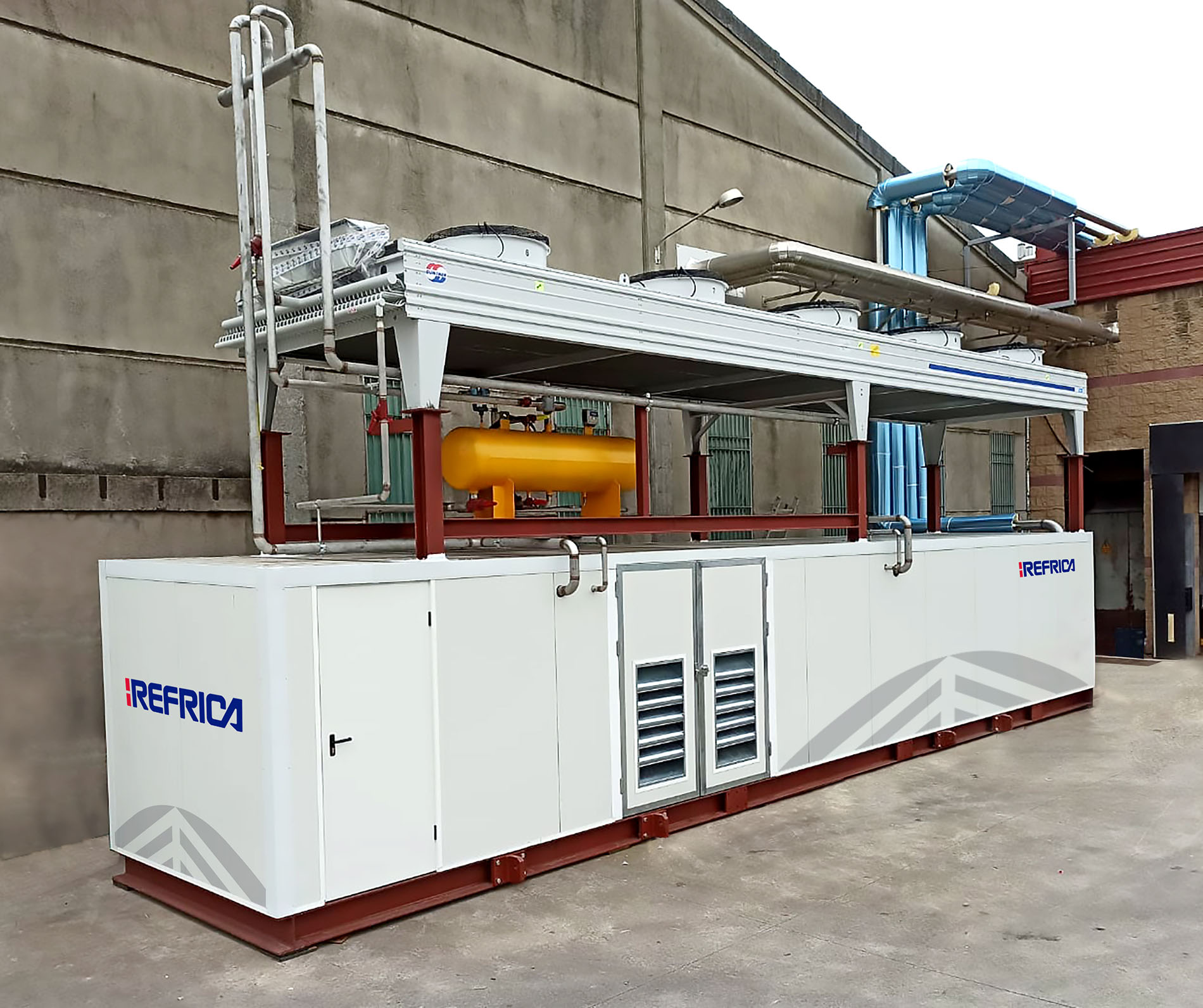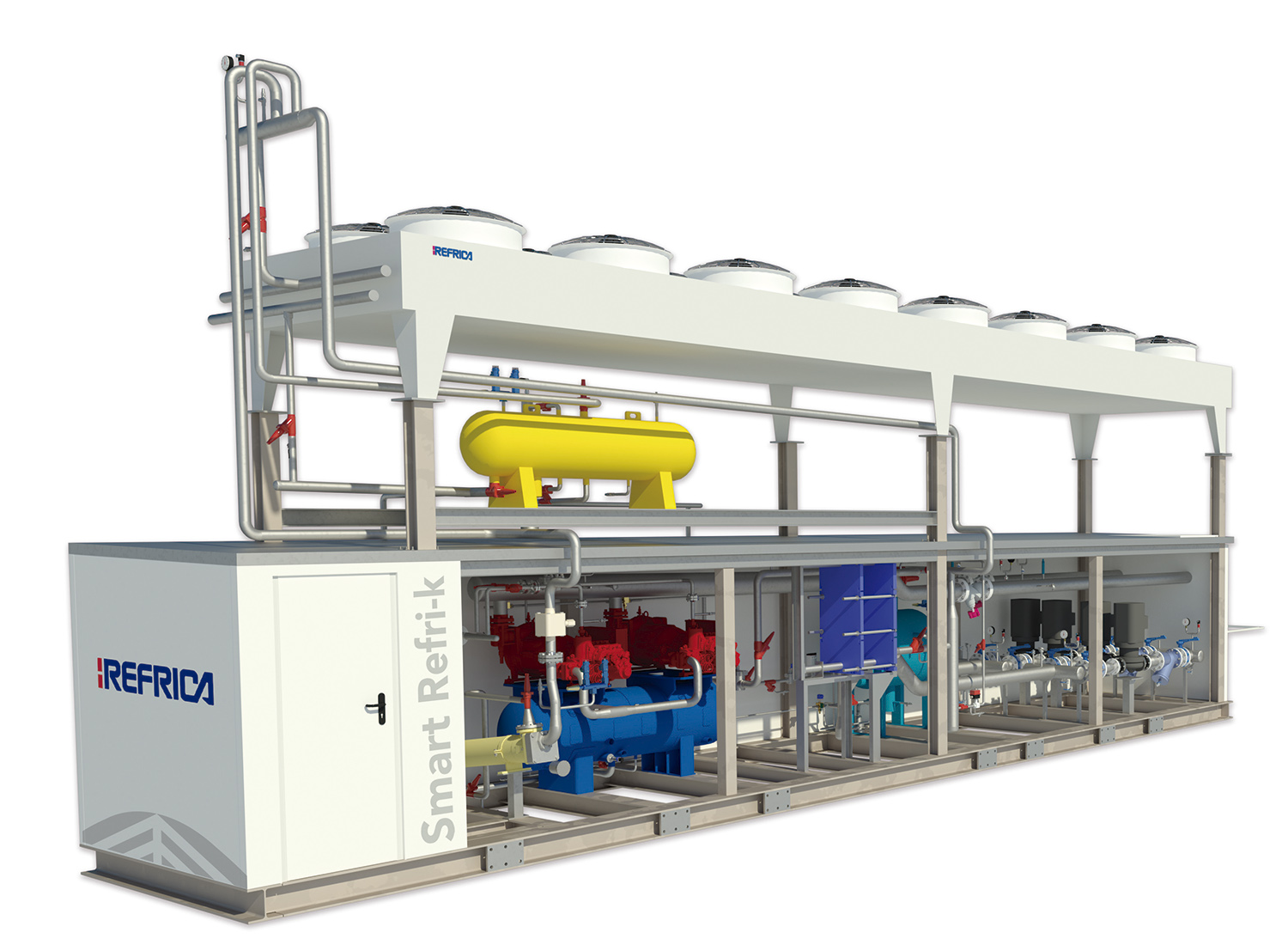PROVIDING ADDED VALUE TO THE WORLD OF REFRIGERATION
Smart Refri-K is a compact, modular, low refrigerant charge, low maintenance cost, safe and highly energy efficient solution that can improve the production process, turning a need into value.
Every day the situation in which industries need to increase their refrigeration production is more common, either due to an increase in production or due to regulatory changes that increase their thermal requirements, since lower temperatures are increasingly required due to the demands of food safety. This often means that they have unforeseen growth and in many cases, the availability of space for new refrigeration production systems is very limited or even non-existent, making it very difficult to cover the new refrigeration capacity requirement.
There are cases, such as the installation that can be seen in the photograph, where the company needed to expand refrigeration production, but there was no possibility of expanding the building due to urban regulations.
Often, when thinking about a refrigeration installation, it is seen as a necessity, and not as an opportunity or added value for the activity for which it is intended. But it should be taken into account as a strategic resource that can improve both the production process and help reduce production costs. To achieve these two purposes, it is essential to choose the best refrigeration system for each need.
It should be noted that there is currently a gradual process of restriction in the use of the most commonly used synthetic refrigerants up to now (F-Gas regulation) which is making many of the existing facilities economically unfeasible due to the high costs of both maintenance (especially due to the high price that these refrigerants have in the event of a leak), and of operation (they are cheaper installations, but with low energy efficiency).
For this reason, there are industries that are opting to convert their refrigeration facilities to secondary fluids (glycols, brines…) that allow the presence of refrigerant to be restricted in the engine room, as well as reducing its load, and therefore the impact in the event of of a possible escape. They also allow refrigeration production to be based on systems with natural refrigerants, such as ammonia, which will not be affected in their use in future restrictions and which allow their use in refrigeration systems with high energy efficiency.
With the aim of covering all these needs, Refrica has presented during the last IFFA held in Frankfurt on May 14-19, a solution fully focused on providing added value to customers and solving all these common problems.
For the development of this solution, Refrica has opted for a natural refrigerant such as ammonia, minimizing the necessary space requirements, with a compact solution, low refrigerant charge and easy installation, all without forgetting an important point, such as energy efficiency, especially considering current energy prices.
This solution has been baptized with the name of Smart Refri-K and is presented in different
compressor options (open type snail or semi-hermetic and also open piston). It contemplates the possibility of heat recovery to heat a hot water or glycol ring for defrost applications, humidity control in premises where necessary or even to economize the production of DHW with recovered heat and reduce the cost of its production. .
In short, Smart Refri-K is a versatile refrigeration plant for cooling secondary fluid (water, water + glycol, Temper or any other thermal fluid), with the option of heat recovery for different uses (hot glycol, DHW production). embedded in a prefabricated enclosure, acoustically insulated and equipped with the corresponding electrical control panel and protection of all the elements that make it up.
This totally modular solution allows responding to new refrigeration needs of the industries without the need for a dedicated machine room and facilitating, if necessary, its transfer to a new location.
In its design, both the optimization of the necessary space and the energy efficiency of the system and the ease of maintenance operations have been taken into account.








